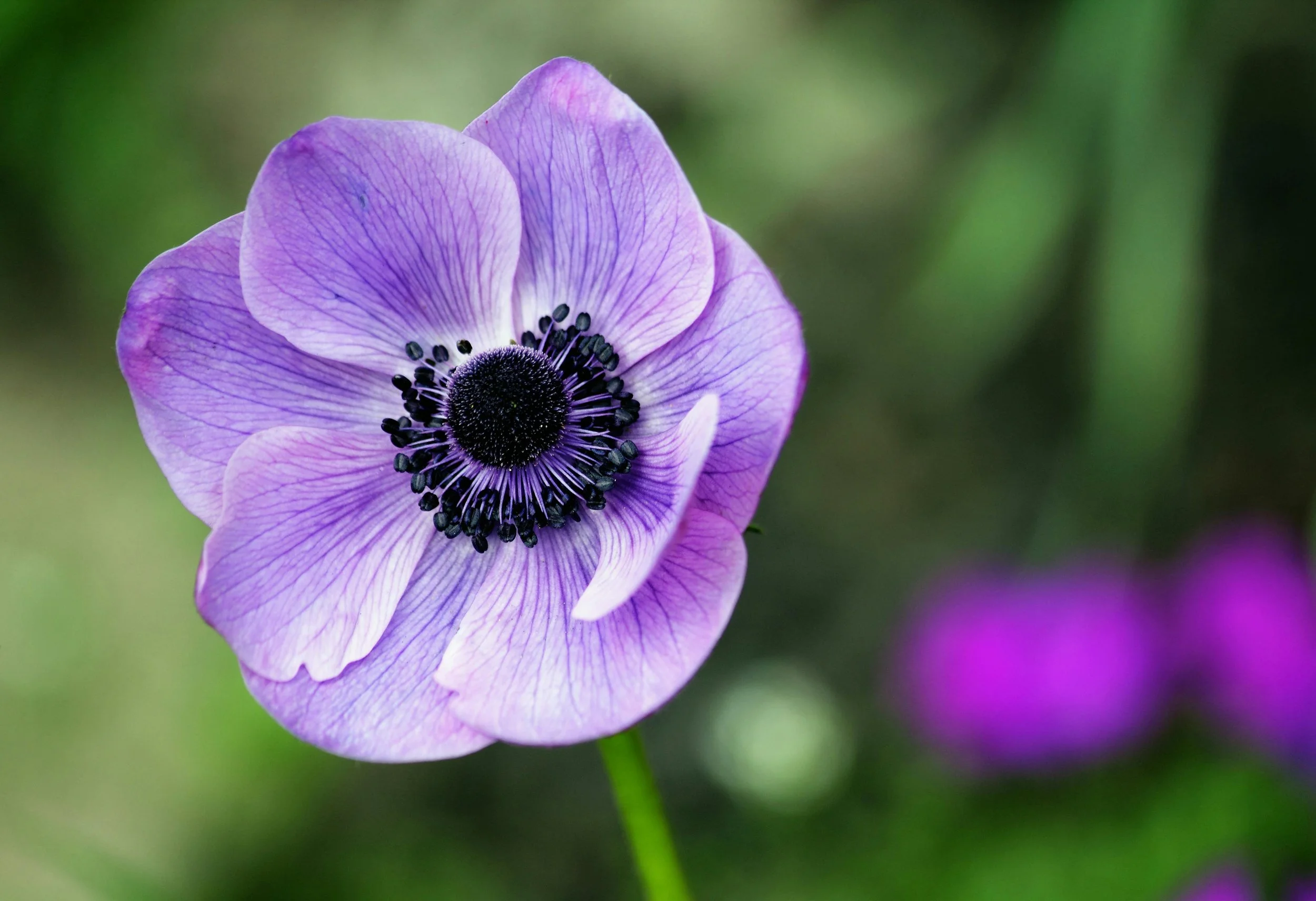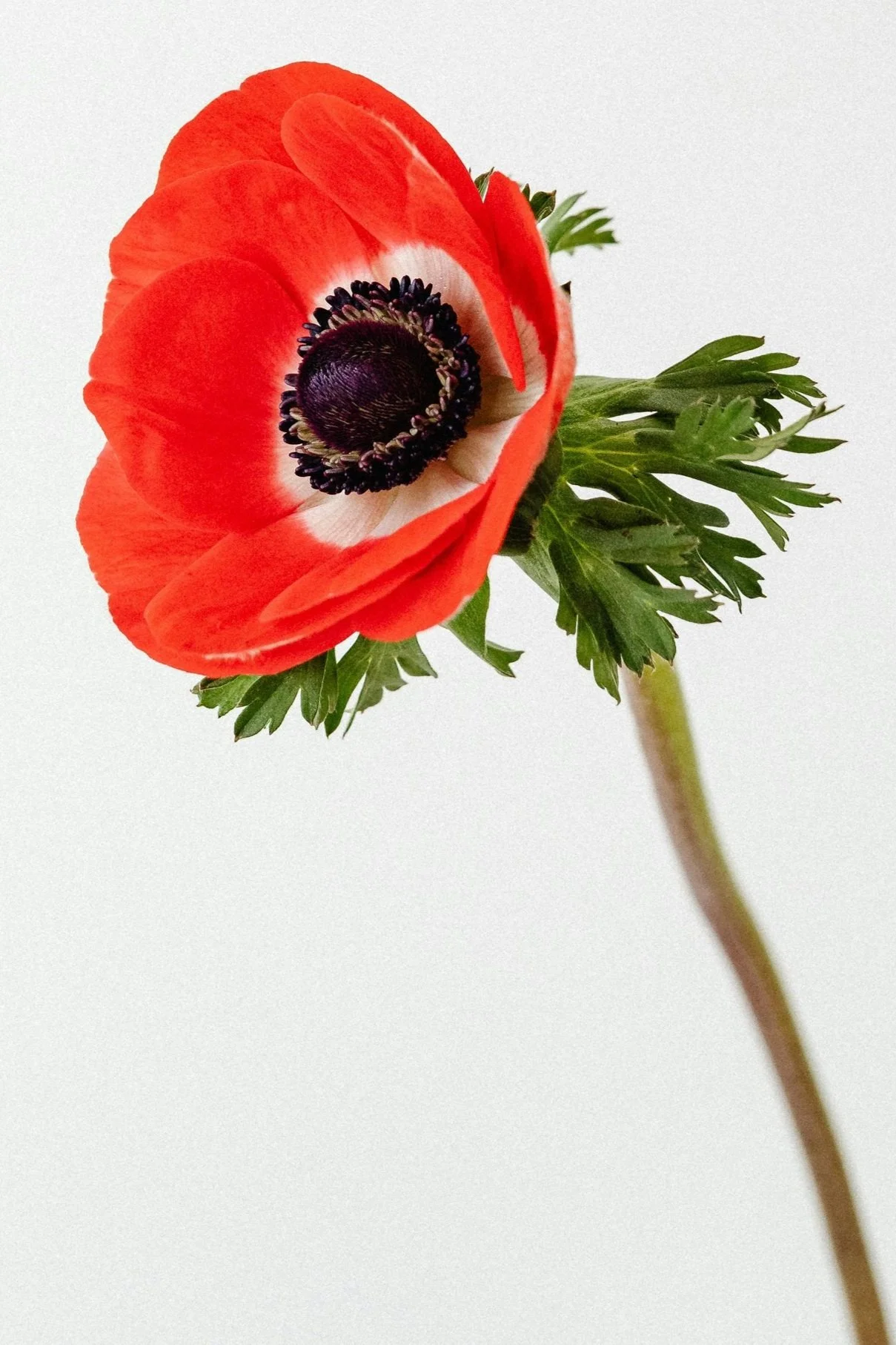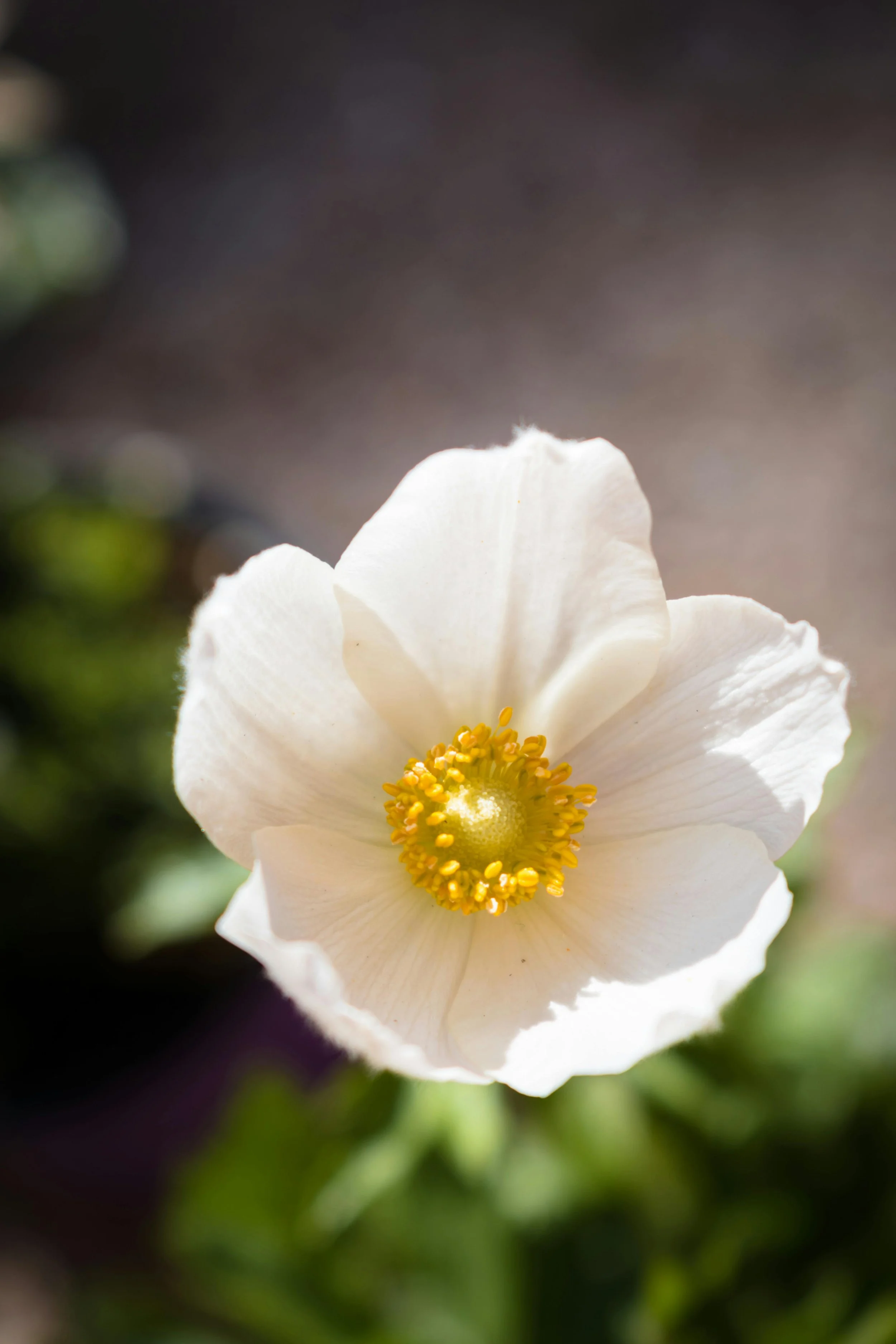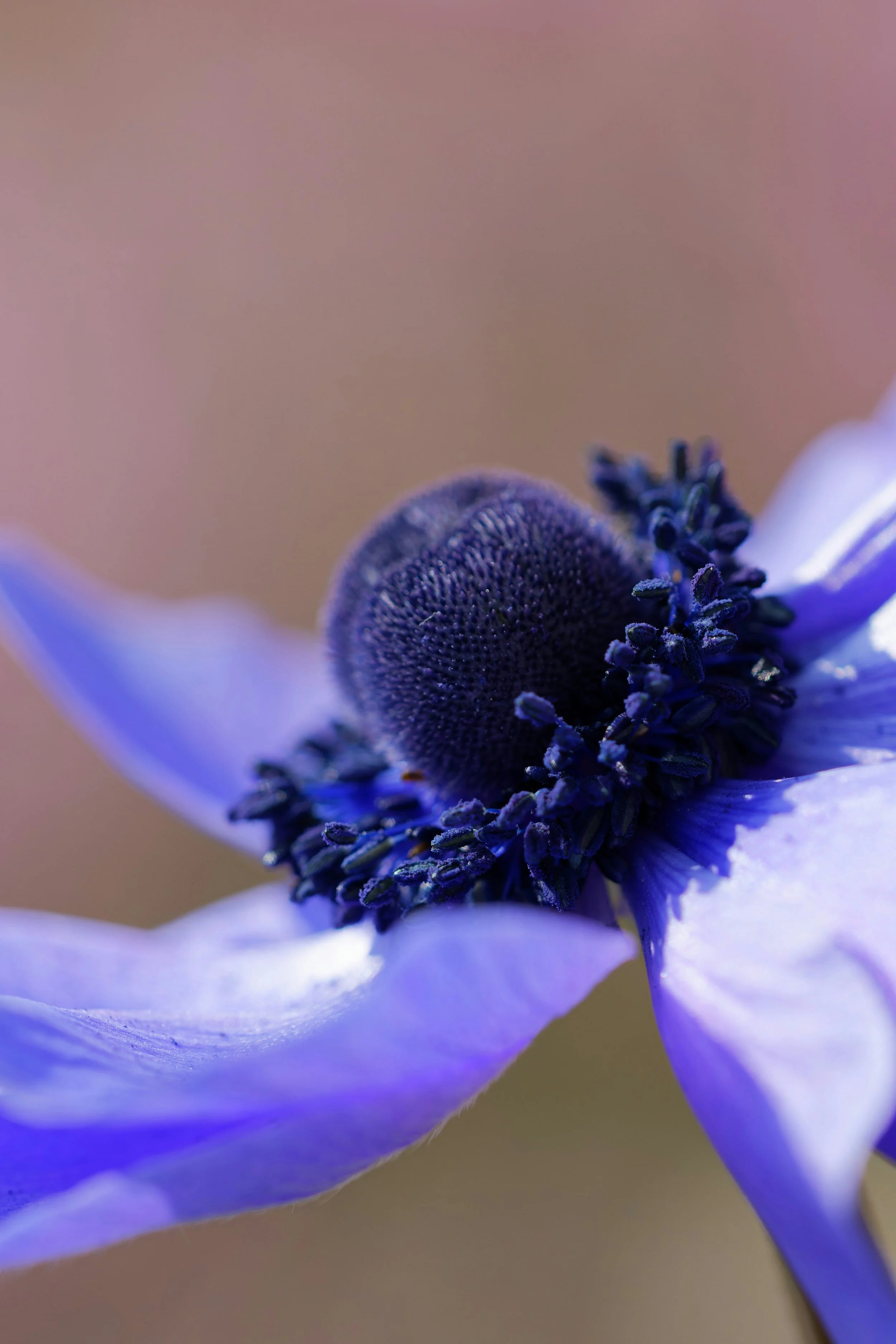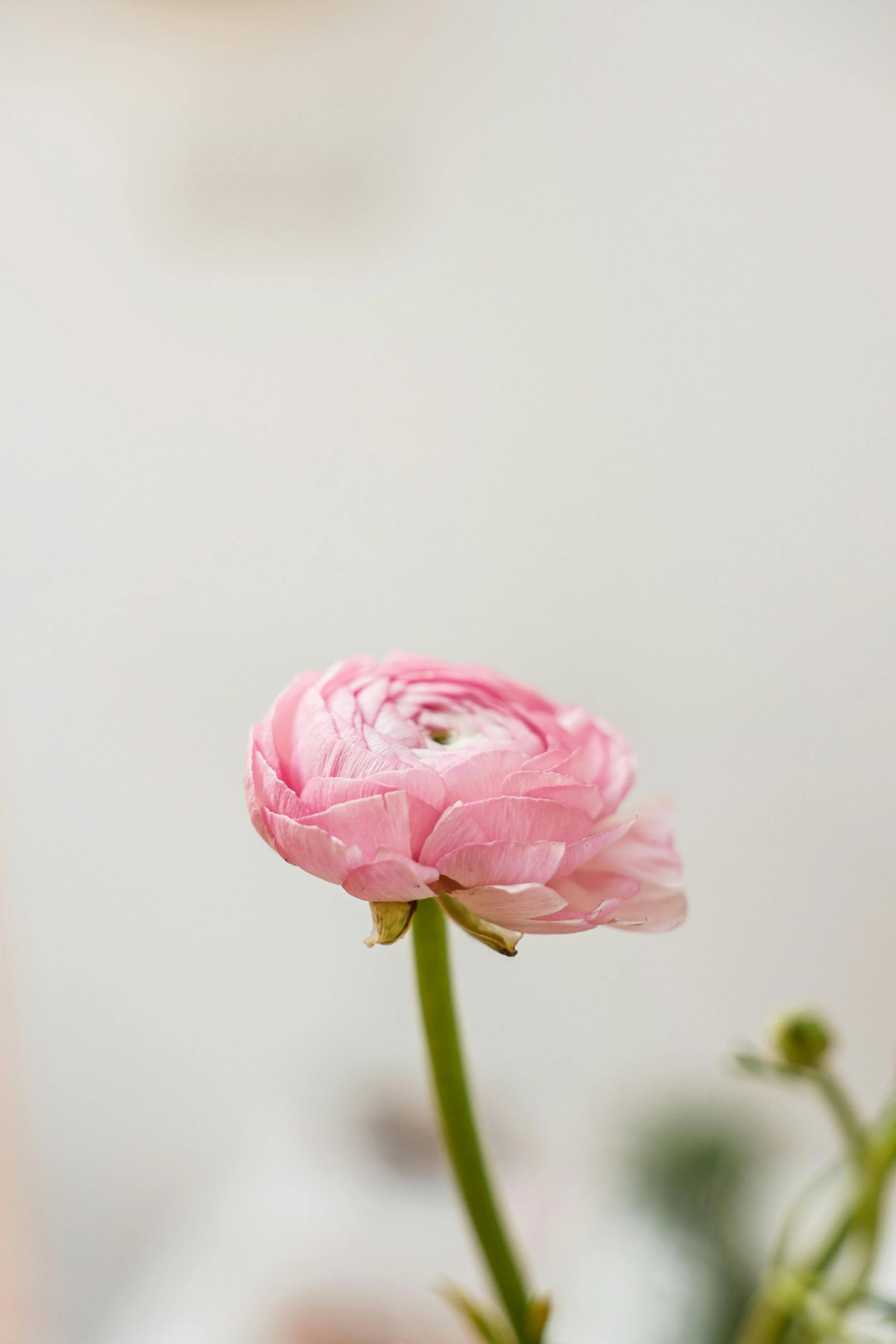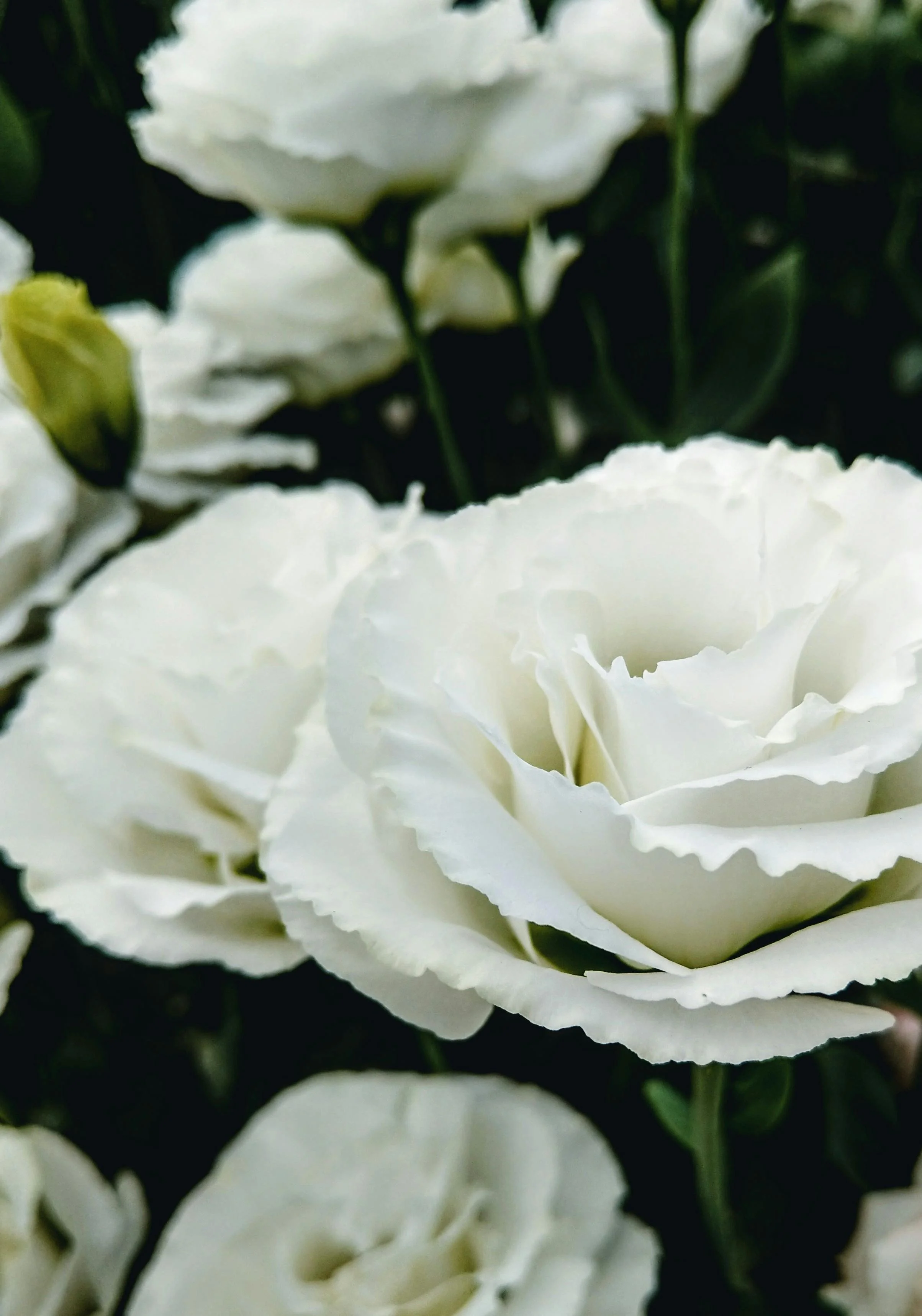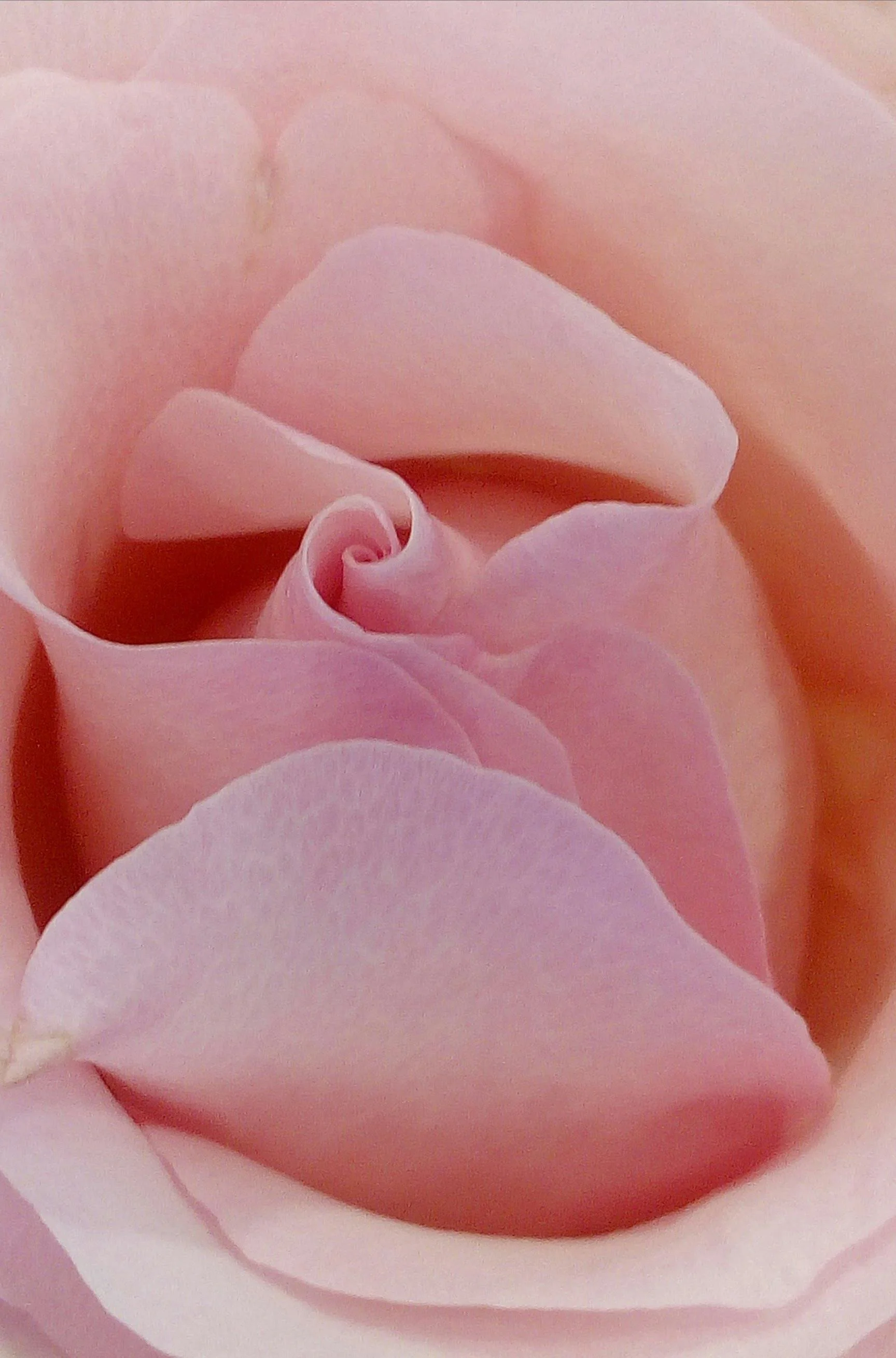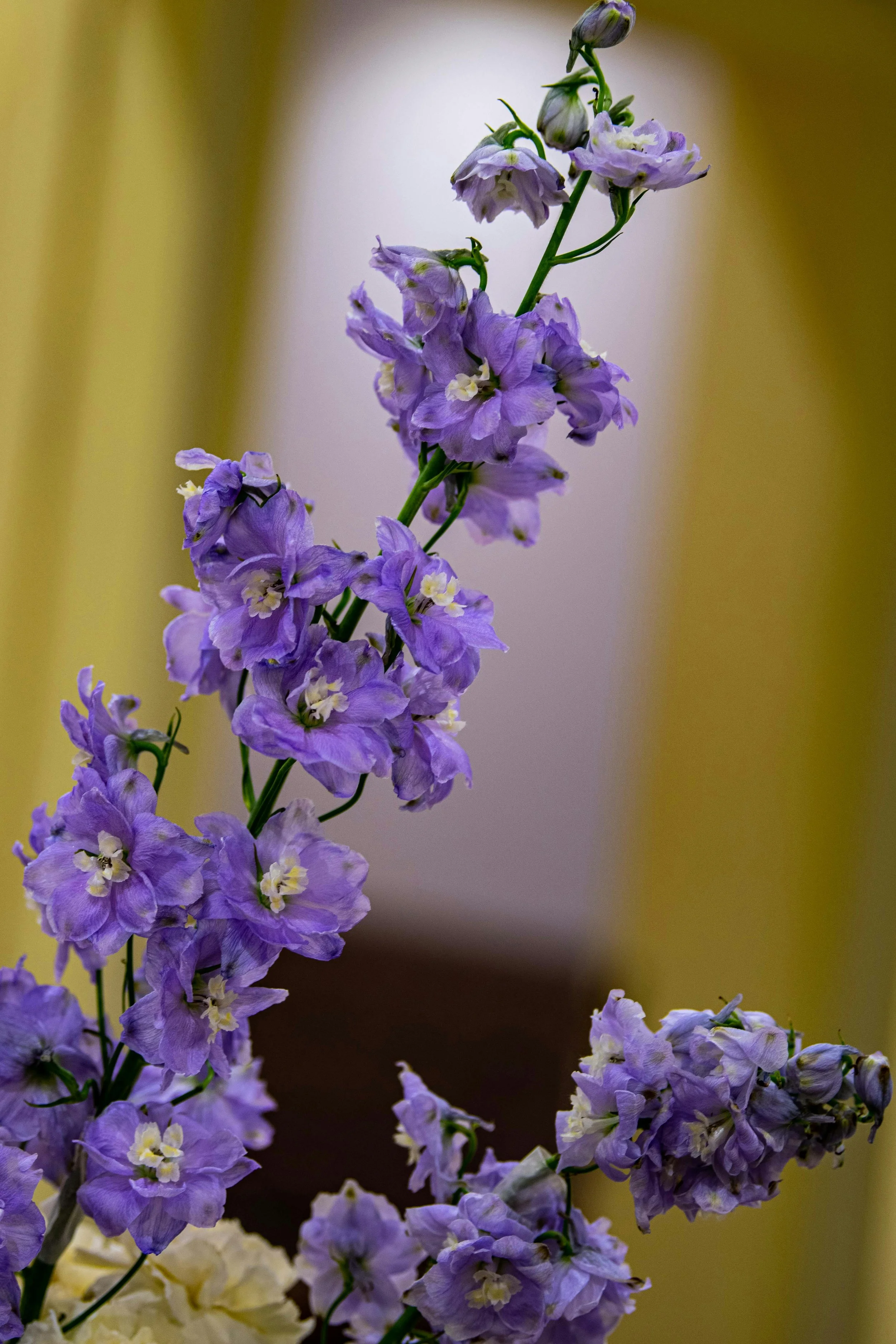THE ANEMONE— no. 002 —
These delicate, poppy-like blooms are a breath of fresh air in any floral arrangement. With their papery petals, striking centers, and versatility across design styles, Anemones bring a cheerful warmth to wintertime designs. From seasonality and features to care tips, perfect pairings, and even a romantic bouquet recipe to inspire your next floral project — keep reading to learn more about these beautiful blooms!
SEASONALITYAnemones are beloved cool-season blooms that add a bright touch to floral arrangements. Since these flowers thrive in cold conditions, they are often at their best during winter and throughout spring, depending on the variety. This makes them a versatile choice for floral designs for many months of the year. While Anemone blooms are relatively short-lived — more on vase life, below! — their beauty and vividness make them a standout addition to any floral creation.
FEATURESAnemones are delicate, airy, and poppy-esque, with papery petals and a cheerful feel. These simple, open-faced flowers have petals that showcase a contrasting center bloom that comes in black or yellow. Anemone's with a black center are bright and bold, while those with yellow centers are pretty and sunny — and both would look delightful in your next floral design!
DESIGNAnemones are incredibly versatile in floral design, creating visual impact in small and large arrangements alike. They can be used as focal flowers in smaller designs thanks to their bold, captivating center blooms. In larger projects, they transition beautifully into supporting roles as filler flowers, adding rich texture and bright pops of color and warmth. Note: Since they are relatively delicate, they are less suited to serve as line flowers providing structure to an arrangement.
Anemones' versatility also extends to a number of design styles! Pastel varieties shine in romantic arrangements due to their soft colors, airy petals, and delicate forms. Their clean, minimalist silhouette suits modern arrangements as well, and their striking centers add an unexpected pop to rustic designs, especially among other natural, breezy, wildflower elements.
DID YOU KNOW?The name Anemone comes from the Greek word anemos, meaning "wind". The delicate petals of the Anemone flower are easily blown by the wind, which earned it the — completely delightful! — nickname "windflower."
CAREWith proper care, Anemones can last 5-7 days in a vase, but their delicate stems can be hollow and prone to bending or breaking. Be sure to support and handle them carefully when conditioning and arranging with them.
Start by cutting their stems at an angle under running water and removing any leaves that fall below the waterline to prevent bacterial growth. Place them into a clean vase with fresh, cool water and add a floral preservative. Remember to refresh the water and re-trim the stems every 1-2 days to maximize their longevity, and avoid placing them in direct sunlight or near heat sources. Tip: For more structure designs, you can use floral wire to stabilize Anemone stems.
PAIRINGSAnemones blend beautifully with a variety of flowers, particularly those with similarly delicate textures such the ruffled blooms of Lisianthus or the feathery petaled Sweet Pea. These pretty pairings create a soft and romantic effect within floral arrangements. Here are a few other lovely companions to consider for your Anemones!
RECIPELet's create a bouquet with bright anemones and soft, romantic blooms! This design beautifully blends winter’s soft, muted tones with airy romance.
10 stems of Anemones
8 stems of Ranunculus
6 stems of Roses
5 stems of Sweet peas
5 stems of Dusty Miller
7 stems of Seeded Eucalyptus
Prepare your flowers by trimming all stems at an angle to help them absorb water more efficiently. Remove any leaves that fall below the waterline to keep the arrangement clean and fresh. Let the flower stems hydrate in fresh water for at least an hour before starting. Once ready, build a base using the seeded eucalyptus stems. Allow their natural drape to create a sense of movement, then tuck in the dusty miller throughout for soft, silvery texture and balance.
Next, add your focal flowers, the Anemones. Space them out evenly so they anchor the arrangement and draw the eye. Follow with the Roses, angling their stems slightly outward to maintain an open, romantic feel. For added softness, weave in the Ranunculus, clustering a few together to create moments of softness and texture. Finish with the Sweet Peas, whose delicate, arching stems add a subtle flow and a hint of height to the design. Et voilà — your soft, romantic arrangement with Anemones!
RESOURCESWith their delicate, papery petals and bold, striking centers — Anemones are a gorgeous lesson in contrast. Whether you're drawn to their simplicity or their vibrant variety of colors, there's so much to discover about these blooms. Explore more about their beauty, versatility, and how to incorporate them into your floral designs by visiting some of these incredible resources below.
THANK YOU FOR VISITING!It means the world to me that you’ve spent a little time here on Moss Rose Lane. I hope this Anenone Floral Style Guide was interesting and informative, and that next time you’re at your local farmer’s market or flower market, you’ll be inspired to bring home a bunch of these beautiful blooms. See you next week — the journey in flowers continues!
With love,
RACHELPS: Be sure to follow Moss Rose Lane on Pinterest and subscribe to “This Week” (the newsletter!) for weekly flower inspiration, design ideas, floral recipes, and more.

